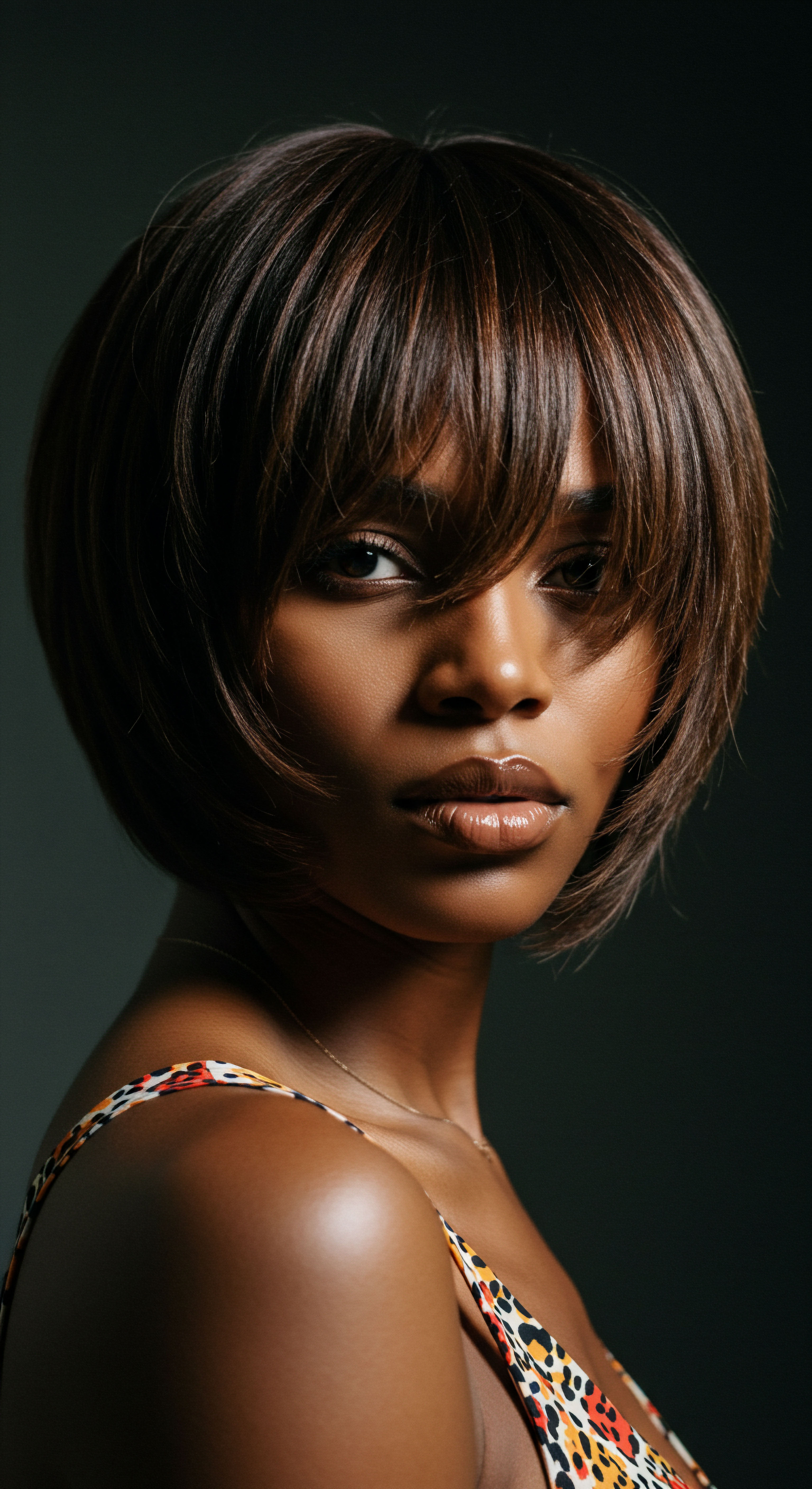
Roots
The whisper of ancestry often settles upon our strands, carrying with it practices passed through generations – a quiet knowing about what nourishes the scalp and what might coax life from dormant follicles. Many of us have felt the gentle hand of a grandmother or elder applying a cherished oil, a concoction steeped in history, believing in its power to foster strong, vibrant hair. This deep-seated trust in traditional scalp treatments raises a compelling inquiry ❉ do these time-honored rituals genuinely influence hair growth? To truly understand this, we must first descend into the very ground from which our hair springs, exploring the intricate biological architecture that governs its emergence and vitality.
Our hair, far more than mere adornment, serves as a living chronicle, each strand a testament to its journey from beneath the skin’s surface. At its very core, the hair follicle, nestled within the dermis, acts as the orchestrator of growth. This microscopic organ, a marvel of biological design, undergoes a continuous cycle of rest, growth, and shedding. Understanding these phases – Anagen, Catagen, and Telogen – is fundamental to appreciating how any external application might interact with this delicate system.
The anagen phase, the period of active growth, can span years, determining the ultimate length of our hair. A shift in this delicate balance, perhaps hastened by external stressors or internal imbalances, can impact the perceived thickness and length of our crowns.
The hair follicle, a microscopic marvel, orchestrates the continuous cycle of hair growth, rest, and shedding.

Hair Anatomy and Physiology Specific to Textured Hair
Textured hair, with its unique helical structure, presents a distinct set of physiological considerations. The elliptical shape of the follicle, coupled with the way the hair shaft spirals as it exits the scalp, influences everything from moisture retention to susceptibility to breakage. The cuticle, the outermost protective layer, tends to be more open in highly coiled hair, making it prone to moisture loss and thus requiring a more intentional approach to hydration.
The very curvature of the hair shaft means that natural oils, known as sebum, produced by the sebaceous glands within the follicle, struggle to travel down the length of the strand, leaving ends particularly vulnerable to dryness. This inherent physiological reality shapes the historical development of many traditional treatments, often emphasizing emollients and occlusives to counteract this natural predisposition.

Follicle Shape and Growth Direction
The unique shape of the follicle in textured hair types dictates the growth pattern. Unlike straight hair, which emerges from a round follicle, coiled hair originates from an oval or elliptical follicle. This shape causes the hair shaft to bend and twist as it grows, creating the characteristic curls, coils, and kinks.
This spiraling growth path means that the hair shaft is naturally more fragile at its curves, making it susceptible to mechanical stress and breakage if not handled with care. Any treatment aimed at growth must consider this inherent fragility and work in harmony with the hair’s natural architecture, rather than against it.
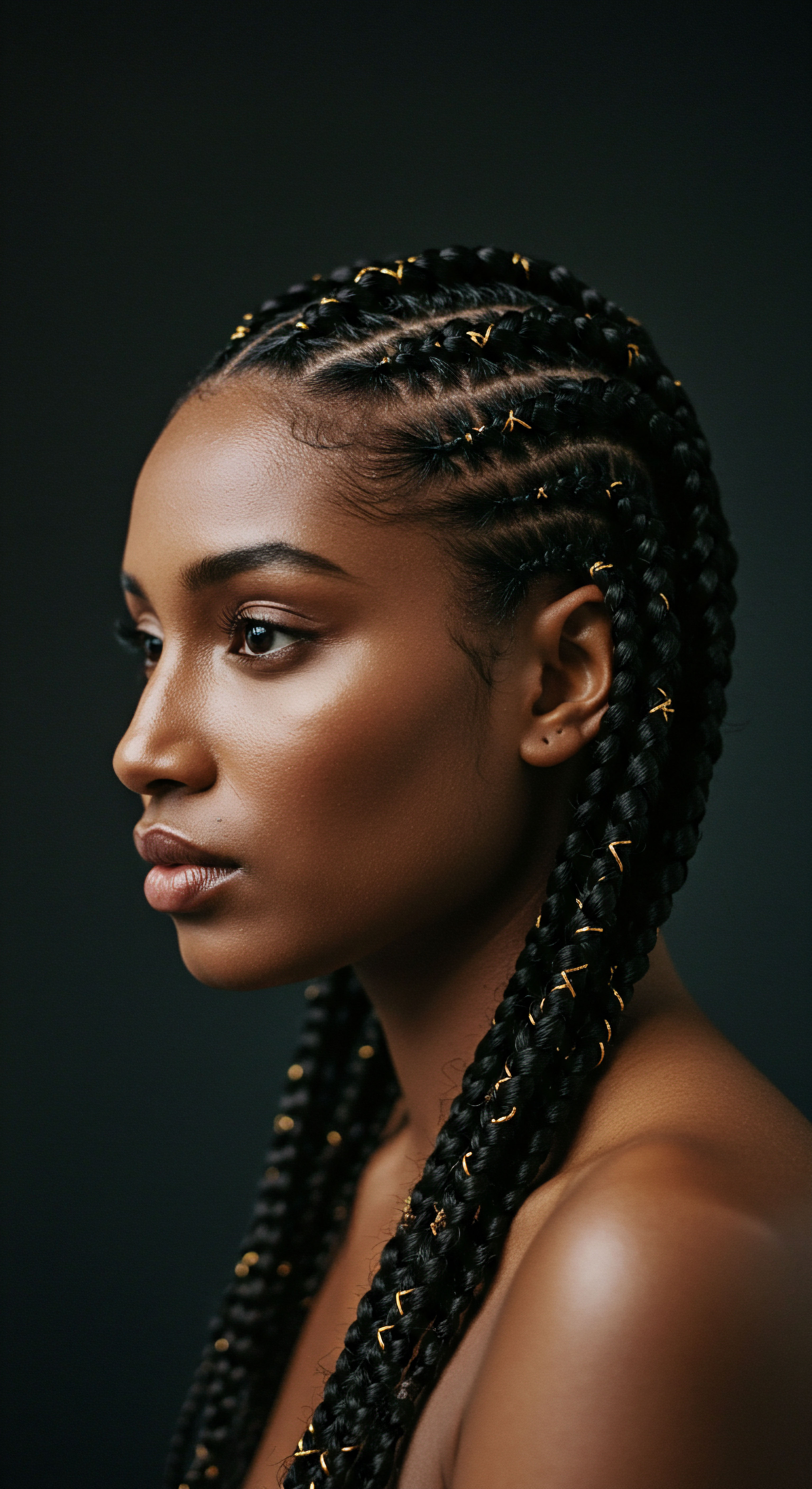
Hair Growth Cycles and Influencing Factors
The life cycle of a single hair is a testament to the body’s continuous renewal. Each follicle operates independently, ensuring a constant supply of new strands. The anagen phase, the longest, is where cells within the follicle rapidly divide, pushing the hair shaft upwards. This active growth can last anywhere from two to seven years.
Following this, the catagen phase, a brief transitional period, signals the end of active growth as the follicle shrinks. Finally, the telogen phase, a resting period, sees the hair shed as a new hair begins its anagen phase beneath. Disruptions to this cycle, such as prolonged stress, nutritional deficiencies, or certain medical conditions, can prematurely shift follicles into the resting or shedding phases, leading to perceived thinning or reduced growth.
- Anagen Phase ❉ The active growth stage where hair cells divide rapidly, forming the hair shaft.
- Catagen Phase ❉ A brief transitional stage where hair growth ceases and the follicle shrinks.
- Telogen Phase ❉ The resting phase, after which the hair sheds and a new growth cycle begins.
Traditional treatments often aim to extend the anagen phase or reduce premature shedding, though their mechanisms of action may differ from modern pharmacological interventions. The efficacy of these treatments, therefore, hinges on their ability to positively influence these biological processes at the follicular level.
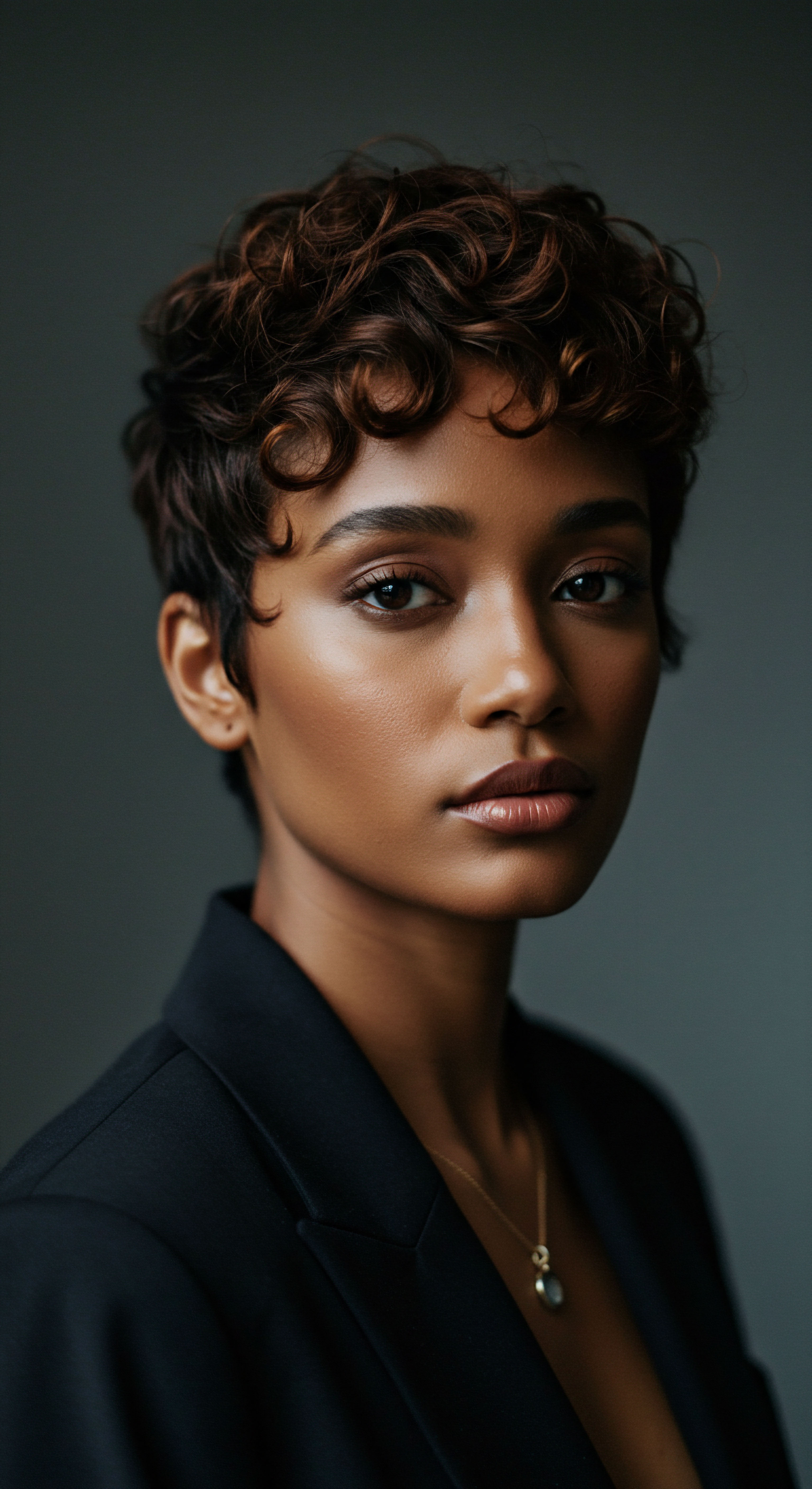
Ritual
Our hands, guided by generations of shared wisdom, often reach for familiar jars and bottles, preparing a weekly scalp treatment. These practices, whether a warm oil massage before cleansing or a potent herbal paste left to sit, are more than mere steps in a routine; they are deeply ingrained rituals, acts of care that connect us to a broader lineage of hair wisdom. As we consider the impact of these traditional scalp treatments on hair growth, it becomes clear that their influence is not always direct or singular. Instead, it is a confluence of factors, encompassing the ingredients themselves, the method of application, and the very intention behind the practice.
Many traditional treatments are characterized by their reliance on natural ingredients sourced from local environments. Oils like Coconut Oil, Castor Oil, and Argan Oil are staples in various cultures, often infused with herbs such as rosemary, peppermint, or amla. These ingredients are believed to possess properties that cleanse, soothe, and nourish the scalp.
The application often involves a gentle massage, a rhythmic motion thought to stimulate blood circulation and distribute the treatment evenly. This blend of natural components and mindful application forms the core of many traditional scalp care rituals.

Understanding Traditional Preparations
The spectrum of traditional scalp treatments is wide, reflecting the diverse botanicals and practices of global communities. From the ancient Ayurvedic remedies of India to the rich herbal traditions of African diasporic communities, each preparation carries a unique history and perceived benefit. Some involve macerating herbs in carrier oils, allowing the beneficial compounds to infuse over time.
Others might involve creating pastes from powdered plants, mixed with water or other liquids to form a potent topical application. The wisdom embedded in these preparations often speaks to centuries of observation and empirical knowledge about plant properties.

Common Ingredients and Their Historical Uses
A closer look at some frequently encountered ingredients reveals their traditional roles. Rosemary, for instance, has been used in various cultures for its purported stimulating properties, often appearing in infusions or oils. Peppermint Oil, with its invigorating sensation, is another popular choice, believed to increase blood flow to the scalp.
In many South Asian traditions, Amla (Indian gooseberry) is revered for its high vitamin C content and antioxidant properties, often used to promote hair health and prevent premature graying. While the scientific community continues to study the exact mechanisms of these ingredients, their historical use underscores a deep cultural trust in their efficacy.
| Ingredient Coconut Oil |
| Traditional Use Moisturizing, strengthening hair shaft |
| Common Form Oil, hot oil treatment |
| Ingredient Castor Oil |
| Traditional Use Promoting thickness, conditioning |
| Common Form Oil, often blended |
| Ingredient Amla (Indian Gooseberry) |
| Traditional Use Hair health, preventing premature graying |
| Common Form Powder, oil infusion |
| Ingredient Rosemary |
| Traditional Use Stimulating circulation, hair growth |
| Common Form Essential oil, herbal rinse |
| Ingredient Fenugreek |
| Traditional Use Strengthening, reducing hair fall |
| Common Form Seeds (soaked), paste |
| Ingredient This table highlights a few examples of traditional ingredients and their common applications. |
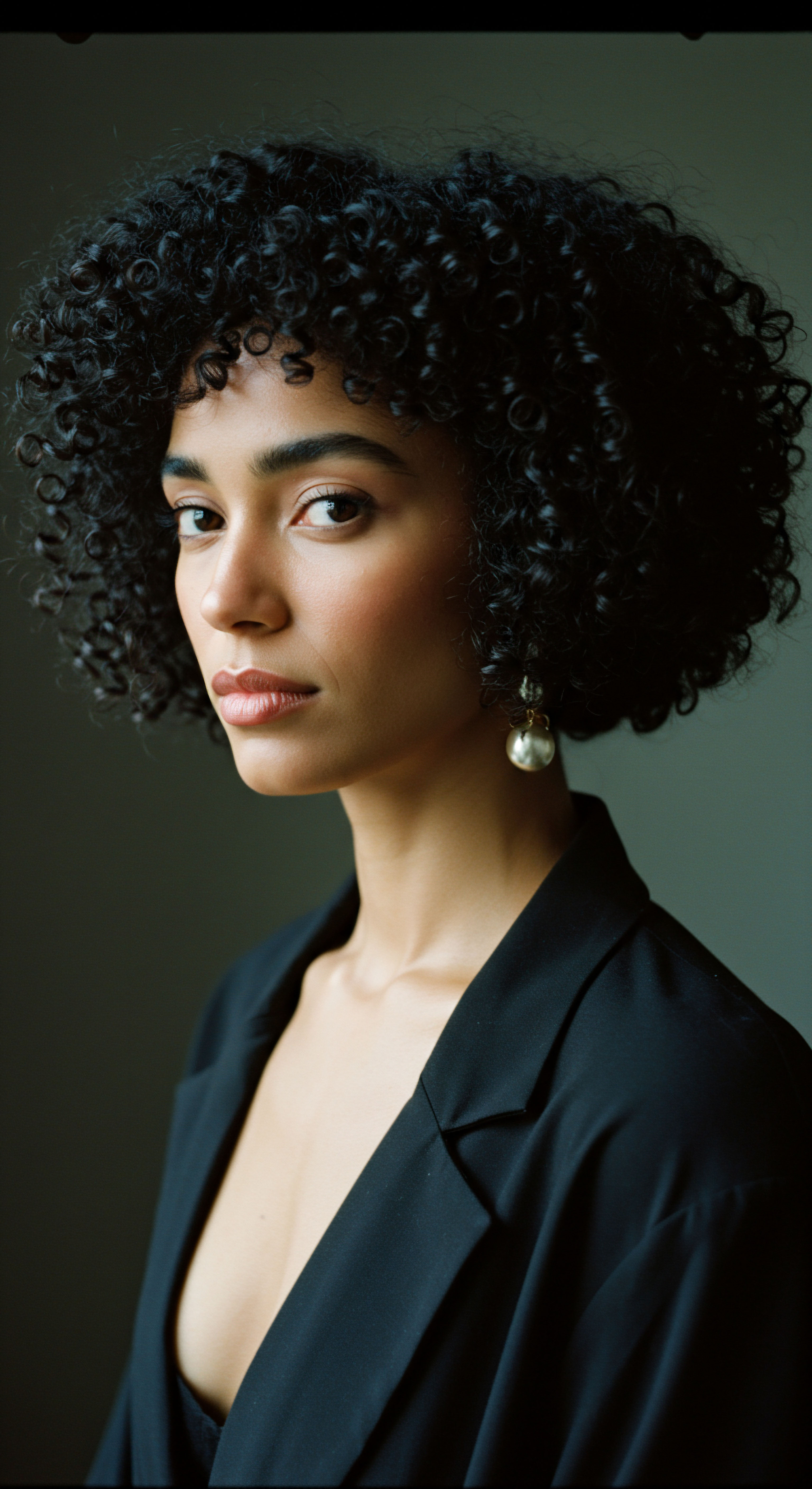
The Role of Application Technique
Beyond the ingredients themselves, the method of application plays a significant role in traditional scalp treatments. The ritual of a scalp massage, for example, is almost universally present. This physical manipulation of the scalp is believed to increase blood flow, which in turn could theoretically deliver more nutrients to the hair follicles. The gentle pressure and circular motions can also help to dislodge product buildup and dead skin cells, creating a cleaner environment for growth.
The ritual of scalp massage, a universal practice, is thought to increase blood flow and create a healthier environment for hair growth.
However, the efficacy of massage alone in directly stimulating new hair growth is a subject of ongoing discussion. While improved circulation is beneficial for overall scalp health, direct evidence linking massage as a sole factor to significant hair regeneration is less conclusive. Some studies suggest that regular, gentle massage might help in increasing hair thickness over time by stretching dermal papilla cells, which are critical for hair formation. It is the synergy of the ingredients and the technique that often forms the perceived power of these traditional practices.
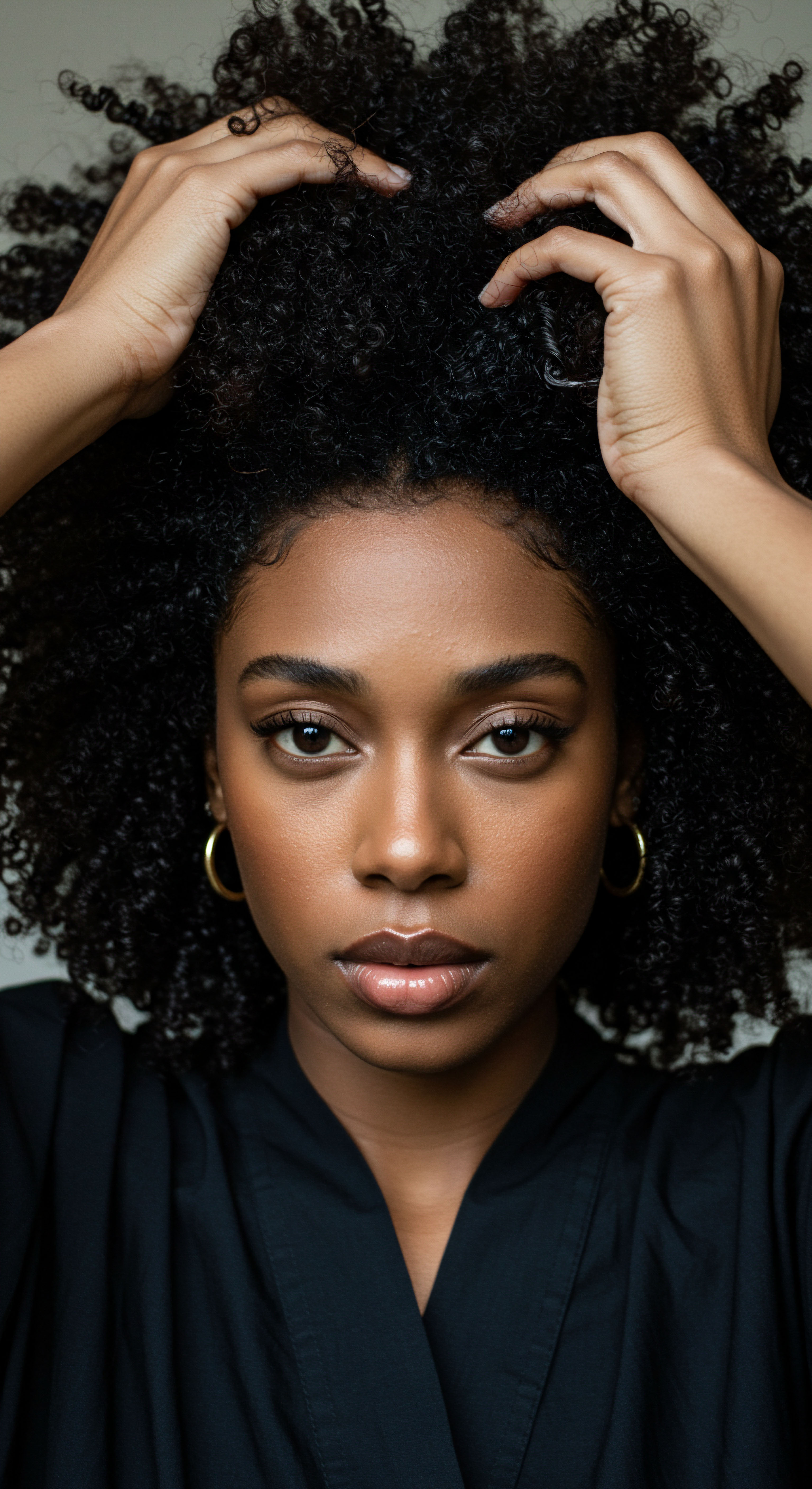
Does Consistent Scalp Massage Promote Hair Growth?
The question of whether consistent scalp massage directly leads to increased hair growth is a complex one, with both anecdotal and some scientific support. The prevailing hypothesis suggests that massage enhances blood circulation to the scalp, thereby potentially improving nutrient delivery to the hair follicles. It may also help to reduce tension in the scalp, which some believe can restrict blood flow. A 2016 study published in the ePlasty journal investigated the effect of standardized scalp massage on hair thickness.
The study found that standardized scalp massage led to increased hair thickness in men with androgenetic alopecia, suggesting a positive mechanical effect on dermal papilla cells. This indicates that while it may not create new follicles, it could support the health and vigor of existing ones, potentially leading to thicker, stronger strands over time. The key lies in consistency and gentle application, avoiding harsh rubbing that could cause friction or irritation.

Relay
To truly understand the dialogue between traditional scalp treatments and hair growth, we must move beyond simple observation and into the intricate dance of scientific inquiry and cultural context. The question is not merely whether these treatments “work,” but how, and under what conditions, they might influence the complex biological processes that govern hair’s journey from follicle to strand. This pursuit requires a deep dive into the available evidence, acknowledging both the wisdom passed down through generations and the rigorous scrutiny of modern science.
Many traditional treatments are built upon centuries of empirical observation, where specific plants and practices were noted to correspond with healthier hair. However, modern scientific investigation seeks to isolate active compounds, understand their biochemical pathways, and quantify their effects through controlled studies. This is where a divergence sometimes occurs ❉ a practice revered for generations may lack the double-blind, placebo-controlled trials that contemporary medicine demands for definitive claims of efficacy. This does not invalidate the cultural significance or perceived benefits, but rather frames the conversation within different epistemological frameworks.

Bridging Cultural Wisdom and Scientific Scrutiny
The efficacy of traditional scalp treatments on hair growth is a subject that often finds itself at the intersection of cultural reverence and scientific skepticism. While many cultures attest to the benefits of certain herbs and oils, rigorous clinical trials that isolate specific active compounds and measure their direct impact on follicular activity are often scarce. This gap in evidence is not necessarily a dismissal of traditional wisdom, but a reflection of differing approaches to knowledge validation.
Consider the widespread use of various plant extracts in traditional remedies. Many contain known antioxidants, anti-inflammatory agents, or vitamins that are beneficial for overall health, including scalp health. A healthy scalp environment is undoubtedly conducive to healthy hair growth. Inflammation, for instance, can impede the proper functioning of hair follicles.
Therefore, treatments that reduce inflammation or provide antioxidant protection could indirectly support hair growth by creating an optimal environment. However, directly linking these general benefits to significant, measurable hair regeneration requires more specific research.

Can Cultural Practices Impact Hair Follicle Health?
Cultural practices can profoundly impact hair follicle health, though often indirectly. Many traditional hair care regimens prioritize gentle handling, protective styling, and consistent moisture application, all of which contribute to a healthy scalp and minimize mechanical damage to the hair shaft and follicle. For instance, the widespread practice of braiding or twisting textured hair in many cultures reduces daily manipulation, thereby lessening breakage and allowing hair to retain length. Conversely, some cultural practices involving tight braiding, excessive tension, or the application of harsh, irritating substances can inadvertently cause damage to the hair follicle, leading to conditions like traction alopecia or contact dermatitis.
A notable case study from the Journal of the American Academy of Dermatology highlights the prevalence of traction alopecia among individuals who frequently engage in tight hairstyles, a practice often rooted in cultural aesthetic preferences. This underscores the importance of discerning which traditional practices genuinely support follicular health and which might pose risks, regardless of their historical context.
Cultural hair practices, both beneficial and detrimental, significantly influence hair follicle health, with gentle handling and protective styling promoting well-being, while excessive tension can lead to damage.

The Interplay of Biological, Psychological, and Social Factors
The impact of traditional scalp treatments on hair growth cannot be viewed in isolation. It is a complex interplay of biological mechanisms, psychological well-being, and social reinforcement.
- Biological Factors ❉ At the most fundamental level, for a treatment to promote hair growth, it must either stimulate the dermal papilla cells, extend the anagen phase, reduce inflammation, or provide essential nutrients directly to the follicle. Some traditional ingredients may indeed possess properties that interact with these biological pathways, even if the exact mechanism is not fully elucidated by modern science. For example, certain plant compounds might have mild anti-androgenic effects or enhance microcirculation.
- Psychological Factors ❉ The ritualistic aspect of traditional treatments often involves self-care, relaxation, and a sense of connection to heritage. The act of gently massaging the scalp can reduce stress, and stress is a known contributor to hair shedding (telogen effluvium). Therefore, the psychological benefits derived from these practices could indirectly support hair retention and perceived growth by mitigating stress-induced hair loss. The belief in a treatment’s efficacy, a form of placebo effect, can also play a role in a person’s perception of improvement.
- Social Factors ❉ Traditional practices are often shared within communities, reinforcing their perceived value and providing social support. This collective belief and shared experience can strengthen adherence to a regimen, which is crucial for any hair treatment to show results. The communal aspect also contributes to a sense of identity and well-being, further influencing overall health, including hair health.
It becomes clear that while a traditional treatment might not directly cause new hair strands to sprout at an accelerated rate through a specific biochemical interaction, its holistic influence—through improved scalp health, reduced stress, and consistent care—can certainly contribute to healthier, stronger hair that is less prone to breakage and shedding, thereby creating the appearance of better growth and retention. The beauty lies in appreciating this multifaceted impact, rather than seeking a singular, isolated cause-and-effect relationship.
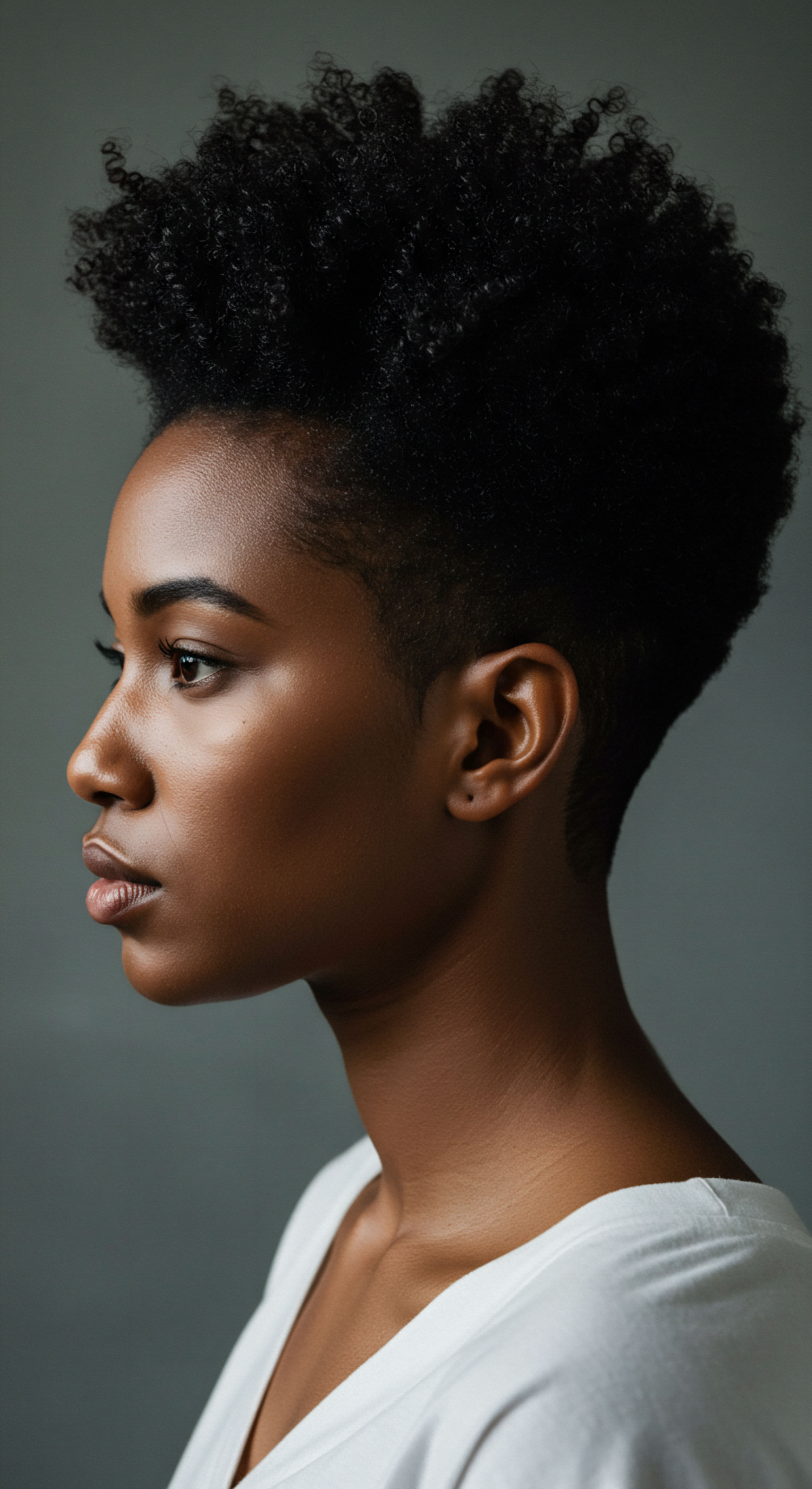
Reflection
Our exploration into the world of traditional scalp treatments and their relationship with hair growth reveals a landscape far richer and more nuanced than a simple ‘yes’ or ‘no’ answer. We have traversed the intricate pathways of hair biology, delved into the cultural significance of ancient rituals, and paused at the threshold of scientific inquiry. What emerges is not a definitive pronouncement, but a profound appreciation for the layered wisdom embedded in these practices.
The delicate balance of ingredients, the intentionality of touch, and the grounding presence of heritage all play a part in the story of our strands. As we continue to care for our textured crowns, perhaps the most profound understanding we can carry forward is that hair health is not merely a biological process, but a holistic expression of self, culture, and enduring care.
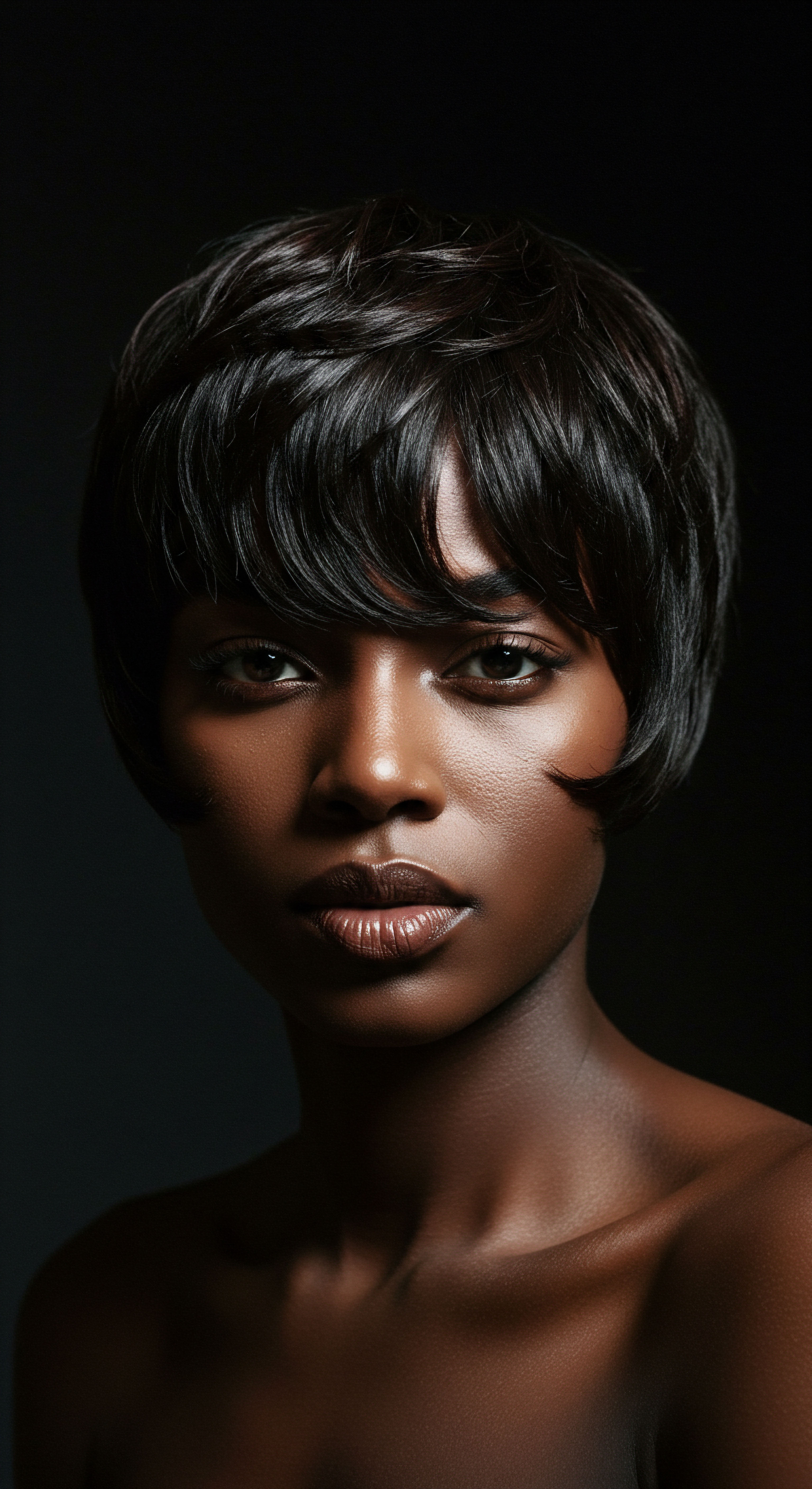
References
- Koyama, T. Kobayashi, K. Hama, T. Murakami, K. & Ogawa, R. (2016). Standardized scalp massage results in increased hair thickness by stretching dermal papilla cells in human hair follicles. ePlasty, 16, e8.
- Khumalo, N. P. Gumedze, F. & Ngwanya, M. A. (2013). Traction alopecia ❉ The 2008 survey in Cape Town. Journal of the American Academy of Dermatology, 68(1), 168-170.
- Draelos, Z. D. (2010). Hair Cosmetics ❉ An Overview. Clinical Dermatology, 28(4), 398-403.
- Dawber, R. P. R. & Van Neste, D. (2004). Hair and Scalp Diseases ❉ Medical, Surgical, and Cosmetic Treatments. Informa Healthcare.
- Robbins, C. R. (2012). Chemical and Physical Behavior of Human Hair (5th ed.). Springer.
- Bouzari, N. & Safizadeh, F. (2019). Hair and Scalp Diseases ❉ A Practical Guide to Diagnosis and Treatment. Springer.
- Bhushan, B. (2010). Biophysics of Human Hair ❉ From the Nano to the Macro Scale. Springer.
- Adinolfi, G. (2017). The Science of Hair Care. Elsevier.
- O’Connell, M. A. & Rogers, G. E. (2007). Hair Biology ❉ A Comprehensive Guide. Cambridge University Press.
- Trüeb, R. M. (2015). Female Alopecia ❉ Guide to Diagnosis and Treatment. Springer.